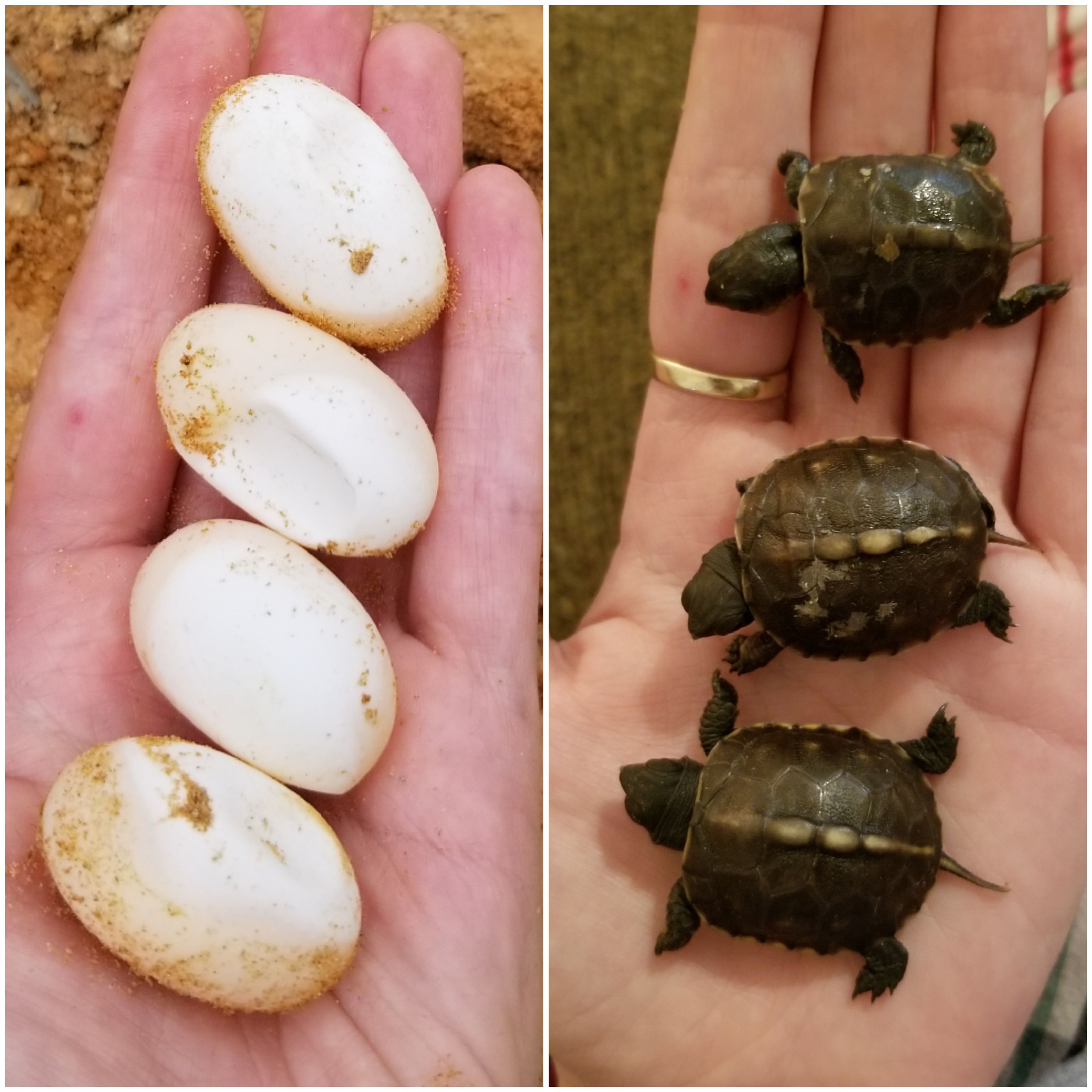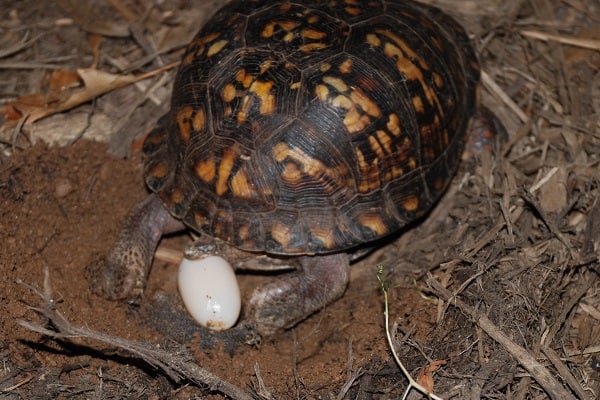How Big Are Box Turtle Eggs?
If you ever wondered how big box turtle eggs are, you are not alone. For centuries, people around the world have been fascinated by these mysterious creatures. Not only are box turtles fascinating to look at, but their eggs also offer a unique insight into their behavior and biology. In this article, we will explore the size of box turtle eggs and discuss why they are so special.
Box turtle eggs are typically about 1 inch in diameter and are slightly oblong in shape. They range in color from white to yellowish-brown and have a leathery texture. It is not uncommon for a female to lay anywhere from 4-7 eggs per clutch.

How Big Are Box Turtle Eggs?
Box turtles are some of the most popular pet reptiles in the world, and for good reason. Their unique look, fascinating behavior, and ease of care make them a joy to keep. One of the most important aspects of care for box turtles is understanding their egg-laying habits. Knowing how big box turtle eggs are is key to providing a safe, secure environment for them to lay and hatch.
Identifying Box Turtle Eggs
Box turtles lay eggs that are roughly the size of a ping-pong ball. They are usually white or off-white in color and are quite soft to the touch. The eggs may also have a thin, leathery outer shell that can be peeled away and discarded. The eggs have a distinct oval shape and are easily identifiable.
Laying Habits
Box turtles lay eggs in the summer months and can lay up to 6 eggs at once. They typically lay their eggs in loose, sandy soil and prefer areas that are dark and moist. The eggs take approximately 60-90 days to hatch, depending on the temperature and humidity of the environment. After hatching, the baby turtles may take a few more weeks to emerge from the nest and begin exploring their new world.
Egg Care
Once the eggs are laid, it’s important to create a safe and secure environment for them to hatch. The eggs should be kept in a warm, moist area with plenty of ventilation. It is generally recommended to keep the eggs in a temperature between 65 and 85 degrees Fahrenheit. The eggs should also be kept in an area that is free from predators and other potential threats, such as cats and dogs.
Incubation of Eggs
After the eggs are laid, you may choose to incubate them for a more controlled environment. To do this, you will need to purchase an incubator, which can be found online or at a pet store. The incubator should be set to the correct temperature and humidity, depending on the species of turtle. The eggs should be placed in an incubator no more than two days after they are laid, as this helps ensure that they will hatch successfully.
Egg Disposal
If for any reason you do not want to incubate the eggs or keep them in their natural environment, you can dispose of them. Eggs should never be thrown away in a trash can or left out in the open, as this can lead to predators eating them. Instead, you can bury the eggs in a shallow hole in the ground, making sure to cover them completely.
Egg Health
It’s important to monitor the health of the eggs to ensure that they will successfully hatch. If the eggs appear discolored, cracked, or have an unpleasant odor, they should be disposed of immediately. This can help prevent diseases and other potential issues from affecting the eggs.
Egg Hatchlings
Once the eggs have successfully hatched, the baby turtles will need to be cared for properly. They should be kept in a tank with plenty of space for them to move around and explore. A temperature of around 75 degrees Fahrenheit is ideal for hatchlings, as this will help them stay healthy and develop properly. The tank should also be kept clean and the water should be changed regularly to prevent any diseases from developing.
Hatchling Diet
Hatchlings should be fed a diet of moist, high-quality foods, such as mealworms, crickets, and waxworms. They should also be given a vitamin and mineral supplement to ensure they are getting all of the nutrients they need. The hatchlings should be fed on a regular basis and should be given a variety of foods to ensure they receive a balanced diet.
Hatchling Care
Hatchlings need to be monitored closely to ensure that they are healthy and growing properly. They should be handled gently and kept in a warm, moist environment. It’s also important to ensure that the tank is kept clean and free of any potential hazards, such as sharp objects or chemicals.
Turtle Health Care
It is important to provide regular veterinary care for your turtle, even if it is a hatchling. This can help ensure that your turtle stays healthy and has a long, happy life. Regular vet visits should include an exam, as well as any necessary tests or treatments. In addition, regular fecal exams should be done to check for parasites and other potential issues.
Conclusion
Box turtle eggs are small and easily identifiable. They should be kept in a warm, moist environment and incubated if possible. It is also important to monitor the health of the eggs and provide proper care for the hatchlings. Regular veterinary care is also essential to ensure that your turtle stays healthy and happy.
Related Faq
What Is the Average Size of a Box Turtle Egg?
The average size of a box turtle egg is around 1.5 inches long and 0.75 inches wide. Box turtle eggs are relatively small compared to other turtle species, and they often resemble ping pong balls in size and shape. The color of a box turtle egg can range from white to yellowish-brown depending on the species.
The size of the egg may also depend on the age and health of the mother. An older box turtle may lay eggs that are slightly larger than a younger turtle, and a healthy female will be more likely to lay larger, healthier eggs.
How Many Eggs Does a Box Turtle Lay?
Box turtles typically lay 3 to 5 eggs at a time, although some females can lay up to 8 eggs. The eggs are laid in a nest of dirt or sand that is around three inches deep and can take up to three days to complete. After laying the eggs, the female will cover the nest with dirt or leaves and leave it to incubate.
The eggs are laid in the spring and can take anywhere from 8 to 18 weeks to hatch, depending on the conditions of the nest and the species of box turtle. The eggs need to remain at a consistent temperature during this time in order to successfully hatch.
How Can I Tell If My Box Turtle’s Eggs Are Fertilized?
Fertilized box turtle eggs will have a dark spot on them when they are laid. This spot is called a blastodisc, and it is the area of the egg that the sperm enters when fertilizing the egg. If the egg does not have a dark spot, it is likely not fertilized.
It is also possible to tell if an egg is fertilized after it has been laid by gently cracking open the egg and looking for the presence of a yolk sac. If the egg is fertilized, there will be a small yolk sac in the center of the egg. If there is no yolk sac present, the egg is likely not fertilized.
Can I Hatch a Box Turtle Egg in My Home?
It is possible to hatch a box turtle egg in your home, but it is important to remember that box turtles are a protected species and it is illegal to keep them as pets in some states. If you decide to hatch a box turtle egg, it is important to make sure that you are providing the best possible conditions for the egg to develop.
The egg should be kept at a consistent temperature of around 80 degrees Fahrenheit, and it should be kept in a humid environment. The egg should also be turned at least once a day to ensure that the embryo develops properly. Once the egg has hatched, it is important to take the necessary steps to ensure that the baby turtle has a safe and healthy environment to grow and thrive in.
What Do I Do If My Box Turtle Eggs Do Not Hatch?
If your box turtle eggs do not hatch, there could be several causes. It could be that the eggs were not fertile, or the temperature and humidity levels in the nest were not optimal. It is also possible that the eggs were too old, or that they were not incubated for long enough.
If you suspect that the eggs were not fertile, there is no need to worry. Unfertilized eggs will not hatch and will usually dry up and disappear after a few weeks. If the eggs were fertile but did not hatch, it could be because the temperature and humidity levels were not right. If this is the case, you should take steps to ensure that the environment is suitable for incubating the eggs in the future.

Eastern Box Turtle EGGS!
In conclusion, box turtle eggs are small in size, ranging from 1/2 inch to 1 inch in diameter. Their size makes them delicate and vulnerable to breakage, so it is important to handle them with care. Despite their size, box turtle eggs are an important part of the life cycle of the species, and their protection is a priority for conservationists.

